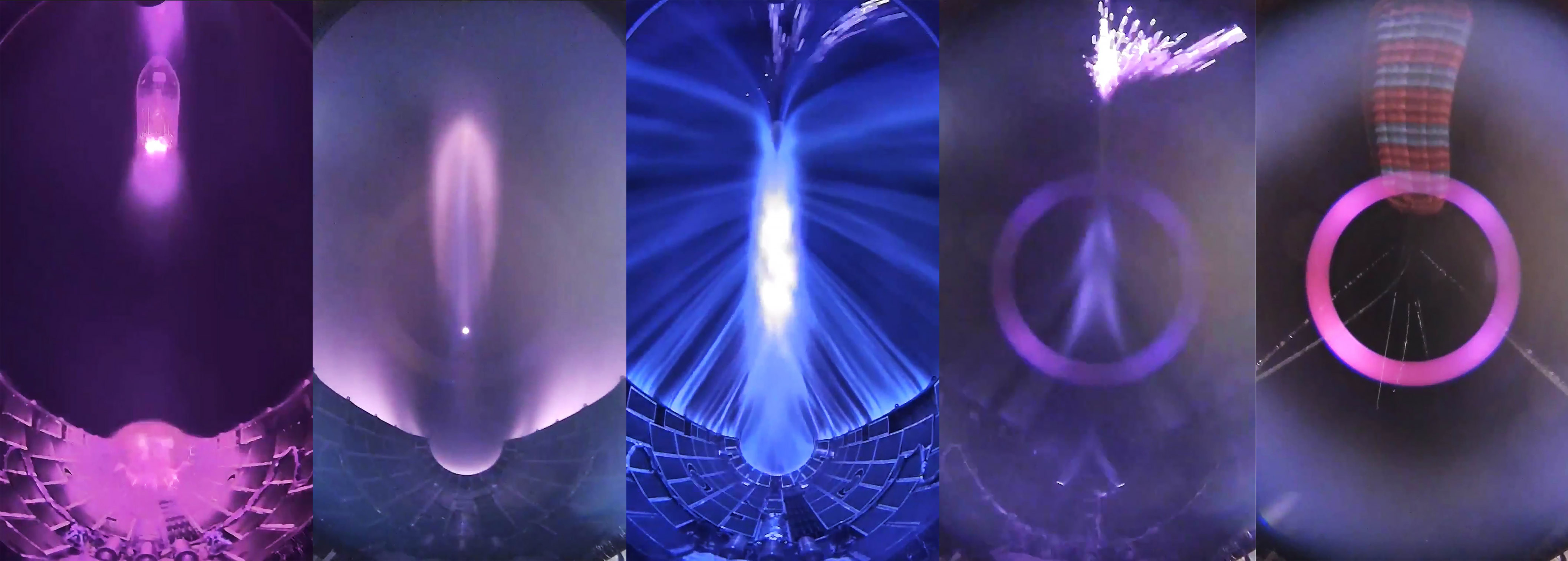

News
SpaceX’s Falcon Heavy fairing tries to enter hyperspace, lands in net in new videos
SpaceX and CEO Elon Musk have released videos offering an extended look at the unexpectedly dramatic conditions Falcon payload fairings are subjected to during atmospheric reentry, as well as the first successful landing in GO Ms. Tree’s net.
Captured via an onboard GoPro camera during Falcon Heavy’s June 25th launch of the USAF Space Test Program-2 (STP-2) mission, the minute-long cut shows off a light show more indicative of a spacecraft entering hyperspace than the slightly more mundane reality. Shortly after SpaceX posted the reentry video, CEO Elon Musk followed up with a video showing a fairing’s gentle landing in Ms. Tree’s net. More likely than not, the fairing with the camera attached and the fairing that became the first to successfully land in Mr. Steven’s (now GO Ms. Tree’s) net are the same half. Regardless, the videos help document a major step forward towards SpaceX’s ultimate goal of fairing reuse.
“In a pleasant, last-minute surprise, SpaceX fairing recovery vessel Mr. Steven has departed Port Canaveral for its first Falcon fairing catch attempt in more than half a year. The speedy ship has already traveled more than 1250 km (800 mi) in ~48 hours and should soon be in position to attempt recovery of Falcon Heavy Flight 3’s payload fairing halves.
Over the last week or two, Mr. Steven has been officially renamed to GO Ms. Tree, a strong indicator that Guice Offshore (GO) – a company SpaceX is heavily involved with – has acquired the vessel from financially troubled owner/operator Sea-Tran Marine. With this likely acquisition, nearly all of SpaceX’s non-drone ship vessels are now leased from – and partially operated by – GO. The name change is undeniably bittersweet for those that have been following Mr. Steven’s fairing recovery journey from the beginning. However, it’s also more than a little fitting given that the vessel switched coasts and suffered an accident that forced SpaceX to replace the entirety of its arm-boom-net assembly. Much of Mr. Steven – now GO Ms. Tree – has been replaced in the last few months and with any luck, the vessel is better equipped than ever before to snag its first Falcon fairing(s) out of the air.”
— Teslarati.com, June 24th
As they say, the rest is history. Some 60-75 minutes after Falcon Heavy lifted off from Pad 39A on June 25th, Ms. Tree successfully caught a parasailing fairing for the first time ever, just barely snagging one of the two halves at the very edge of the ship’s net. Two days later, Ms. Tree arrived back at Port Canaveral. Another 24 hours after that, the intact, dry fairing half was safely lifted onto land and transported to a local SpaceX facility dedicated to analyzing (and eventually refurbishing) recovered Falcon fairings.
Landing on Ms. Tree pic.twitter.com/4lhPWRpaS9— Elon Musk (@elonmusk) July 4, 2019
With any luck, the successful catch will prove that the years of work have been worth it, demonstrating that fairing halves caught – rather than fished out of the ocean – are structurally sound and clean enough to be quickly and affordably reused. While Falcon fairings have been estimated to take up less than 10% of the material cost of Falcon 9 production (~$6M, $3M/half), the manufacturing apparatus needed to build them takes up a huge amount of space. Additionally, the process of oven-curing huge, monolithic carbon fiber fairings introduces fundamental constraints that physically limit how quickly they can be built.
Fairing reuse would be an invaluable benefit for SpaceX’s internal Starlink launches, of which dozens and – eventually – hundreds will be needed to build an operational constellation of satellites. Thanks to the wonders of Falcon 9 Block 5 booster reuse, the internal cost of a flight-proven booster is essentially just the cost of refurbishment and then the propellant and work-hours needed to launch it. What remains is the cost of the expendable Falcon upper stage (unlikely to be recovered or reused) and payload fairing, now reasonably consistent at landing intact on the ocean surface but yet to demonstrate practical reusability.
As proposed, SpaceX’s completed Starlink constellation represents almost 12,000 satellites. Assuming no progress is made with packing density, no larger payload fairing is developed, and Starship doesn’t reach orbit until the mid-2020s (admittedly unlikely), Starlink will require almost exactly 200 Falcon 9 launches, each carrying 60 satellites. According to Musk, despite the fact that the first 60 satellites launched were effectively advanced prototypes, the cost of launch is already more than the cost of satellite production.
Speaking at a conference in 2017, Musk noted that payload fairings cost about $6M to produce, roughly 10% of Falcon 9’s $62M list price. In 2013, Musk stated that the first stage represented less than 75% of the overall cost of Falcon 9 production, meaning that the rocket’s upper stage probably represents another 15-20% (call it a 70:20:10 split), or ~$9-12M. Conservatively assuming that the operating costs of Falcon 9 refurbishment, launch, and recovery are roughly $5M per mission, the internal cost to SpaceX for a launch with a recoverable flight-proven booster and an expended fairing and upper stage could be just $20-25M and may be even lower.


For reference, assuming 200 Falcon 9 launches, SpaceX could save nearly $600M by consistently recovering and reusing just one fairing half on average per launch, up to as much as $1.2B if both halves can be consistently recovered and reused. June 25th’s successful fairing catch is the biggest step yet in that direction and is hopefully a sign of many good things to come for SpaceX’s latest attempt at building truly reusable rockets.
Check out Teslarati’s Marketplace! We offer Tesla accessories, including for the Tesla Cybertruck and Tesla Model 3.
News
Tesla Robotaxi has already surpassed Waymo in this key metric
Tesla Robotaxi has already overtaken Waymo in Austin in one key metric, but there’s still more work to do.

Tesla Robotaxi has already surpassed Waymo in one extremely important key metric: size of service area.
Tesla just expanded its service area in Austin on Monday morning, pushing the boundaries of its Robotaxi fleet in an interesting fashion with new capabilities to the north. Yes, we know what it looks like:
🚨 Tesla’s new Robotaxi geofence is…
Finish the sentence 🥸 pic.twitter.com/3bjhMqsRm5
— TESLARATI (@Teslarati) July 14, 2025
The expansion doubled Tesla Robotaxi’s potential travel locations, which now include the University of Texas at Austin, a school with over 53,000 students.
The doubling of the service area by Tesla has already made its travel area larger than Waymo’s, which launched driverless rides in October 2024. It became available to the public in March 2025.
According to Grok, the AI agent on X, Tesla Robotaxi’s current service area spans 42 square miles, which is five square miles larger than Waymo’s service area of 37 square miles.
Tesla Robotaxi (red) vs. Waymo geofence in Austin.
Much can be said about the shape… but the Robotaxi area is now ~3.9 mi² (10 km²) larger than Waymo’s!! pic.twitter.com/dVfh2ODxJC
— Robin (@xdNiBoR) July 14, 2025
The service area is one of the most important metrics in determining how much progress a self-driving ride-hailing service is making. Safety is the priority of any company operating a ride-hailing network, especially ones that are making it a point to use autonomy to deploy it.
However, these companies are essentially racing for a larger piece of the city or cities they are in. Waymo has expanded to several different regions around the United States, including Arizona and Los Angeles.
Tesla is attempting to do the same in the coming months as it has already filed paperwork in both California and Arizona to deploy its Robotaxi fleet in states across the U.S.
As the platform continues to show more prowess and accuracy in its operation, Tesla will begin to expand to new areas, eventually aiming for a global rollout of its self-driving service.
News
Tesla Megapacks arrive for massive battery replacing coal plant
Tesla Megapacks have started arriving on-site to the Stanwell Battery Project, just as Queensland prepares to wind down the Stanwell coal plant.
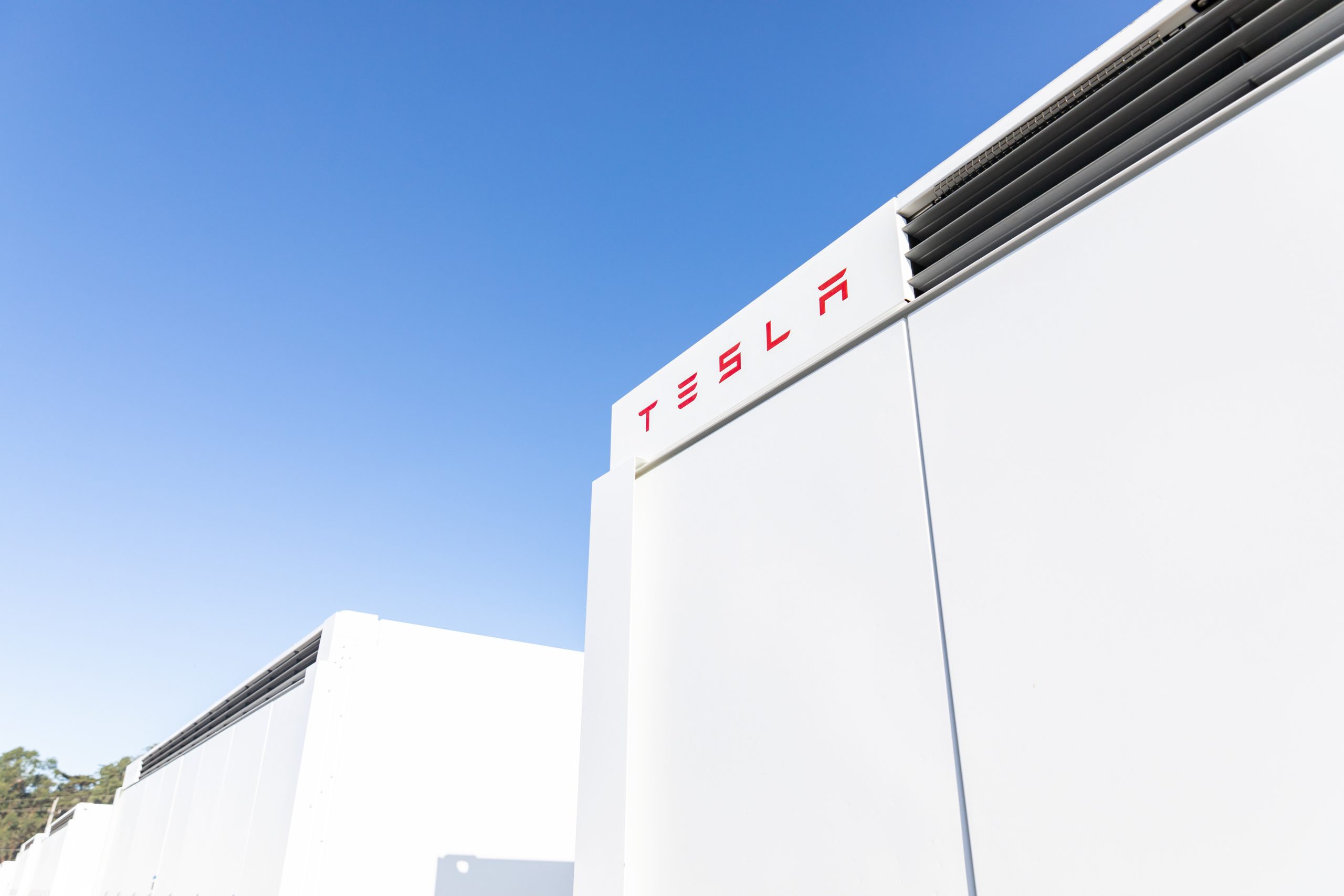
The first of over 300 Tesla Megapacks have arrived to the site of a massive battery energy storage system (BESS) being built in Australia, dubbed the Stanwell Battery Project after a coal plant it’s set to replace.
In a press release last week, the Stanwell Battery Project announced that the first Tesla Megapack 2XL units had arrived to the site, which is located outside of Rockhampton in Queensland, Australia. The project will eventually feature 324 Megapack units, set to arrive in the coming months, in order to support the 300MW/1,200MWh battery project.
“The Stanwell Battery is part of the diversification of our portfolio, to include cleaner and more flexible energy solutions,” said Angie Zahra, Stanwell Central Generation General Manager. “It is just one part of the 800 MW of battery energy storage capacity we have in our pipeline.
“Capable of discharging 300 MW of energy for up to four hours (1,200 MWh), our mega battery will be one of the largest in Queensland.”
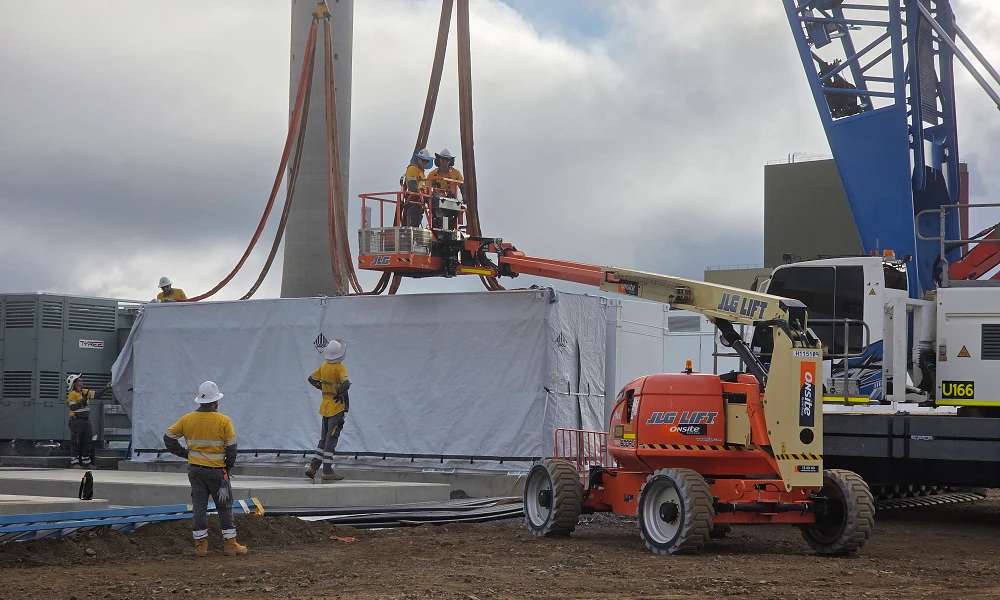
Credit: Stanwell
Did you know Tesla’s Lathrop facility churns out a Megapack every 68 minutes? That’s enough energy to power 3,600 homes for an hour per unit! ⚡️ pic.twitter.com/bG6fpHkB9O
— TESLARATI (@Teslarati) June 11, 2025
READ MORE ON TESLA MEGAPACKS: Tesla Lathrop Megafactory celebrates massive Megapack battery milestone
The state is working with government-owned company Yurika to facilitate construction, and the process is expected to create roughly 80 jobs. The project is expected to come fully online in May 2027, with initial commissioning of the Megapacks aiming for November 2025.
The Stanwell Battery is set to replace the nearby Stanwell coal generation plant, which the government is planning to wind down starting in 2026 as part of efforts to reach an 80 percent renewable energy generation ratio by 2035. Meanwhile, the government is also set to begin winding down the Tarong and Callide coal plants, while several other Megapack projects are being built or coming online. o ya
Tesla currently has two Megapack production facilities, located in Lathrop, California, in the U.S. and another that came online earlier this year in Shanghai, China. The Shanghai Megafactory shipped its first units to Australia in March, while both factories are expected to be capable of producing 10,000 Megapack units per year upon reaching volume production.
News
The Tesla Diner is basically finished—here’s what it looks like
The company first broke ground on the Diner, Drive-in, and Supercharger location in September 2023. Now, it has served one of its first internal customers.

Tesla has finally completed the construction of its highly anticipated Diner, Drive-in, and Supercharger in Los Angeles, and recent photos of the interior’s “retro-futuristic” style are making their way around the internet.
X user Brad Goldberg shared photos from the Tesla Diner site last Tuesday, depicting some of the Supercharger stalls, indoor and outdoor seating areas, multiple neon lights, and even an Optimus robot. Goldberg also noted that there had been a “flurry of activity on site” while he was snapping the photos last week, suggesting that the restaurant location could be getting close to opening.
The Tesla Diner also served one of its first internal customers in the past few days, as Elon Musk posted on X on early Monday morning that he had just finished up eating a meal at the site:
I just had dinner at the retro-futuristic Tesla diner and Supercharger.
Team did great work making it one of the coolest spots in LA!
The photos also show that the site is pretty much done, with some of them even showing vehicles charging at the charging stalls.
You can see some of the latest photos of the Tesla Diner below.
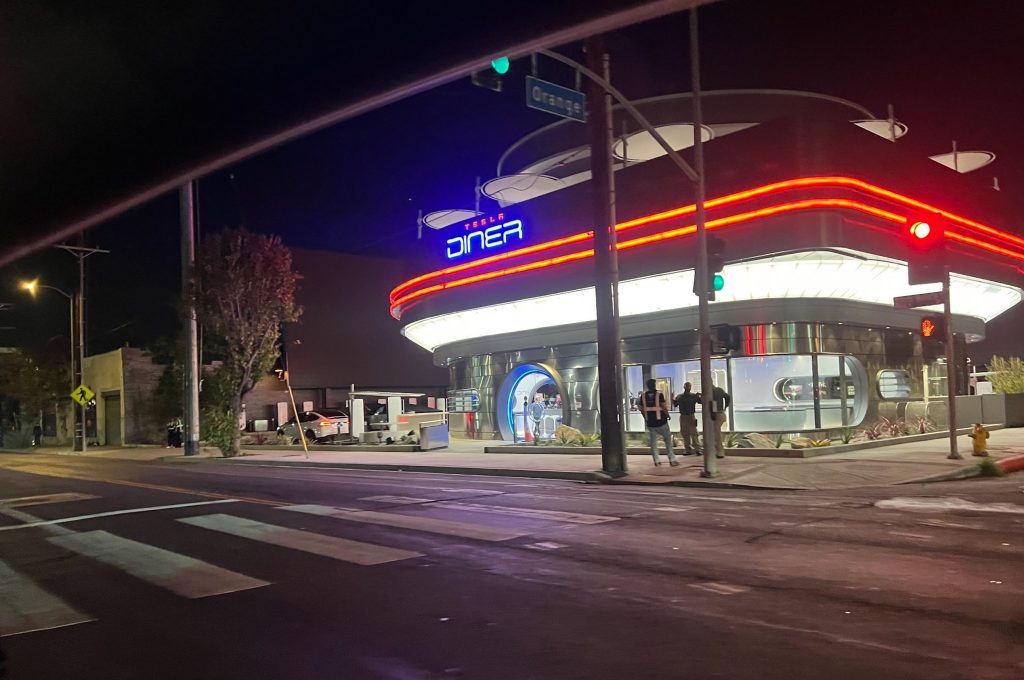
Credit: BradGoldbergMD | X
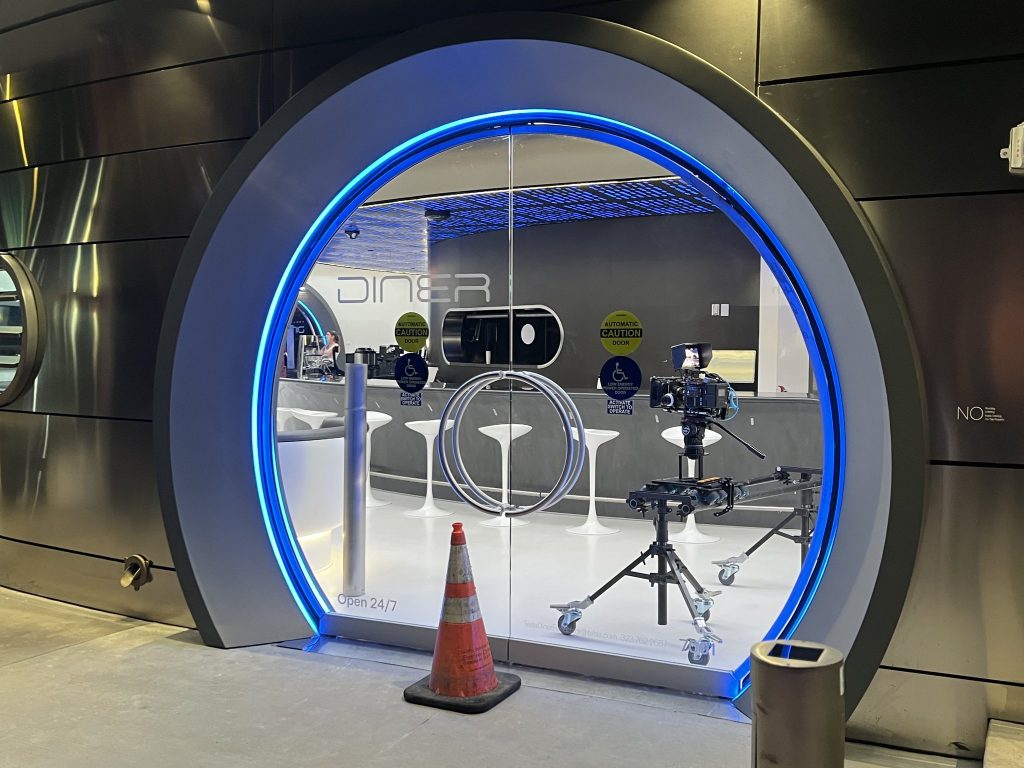
Credit: BradGoldbergMD | X
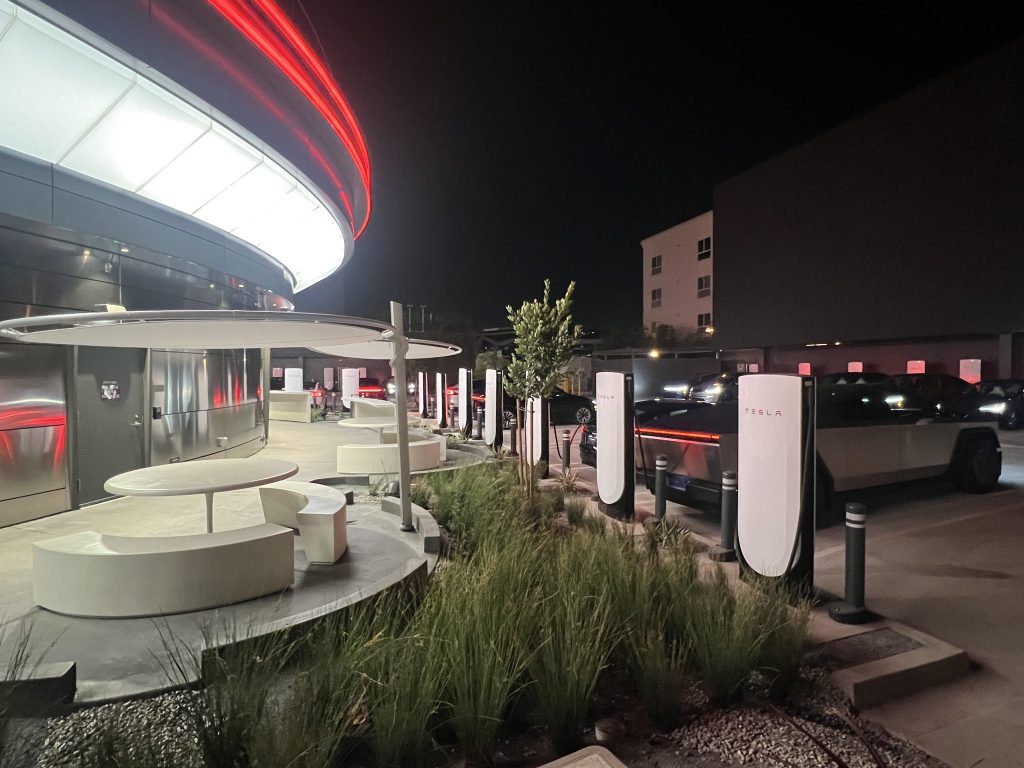
Credit: BradGoldbergMD | X
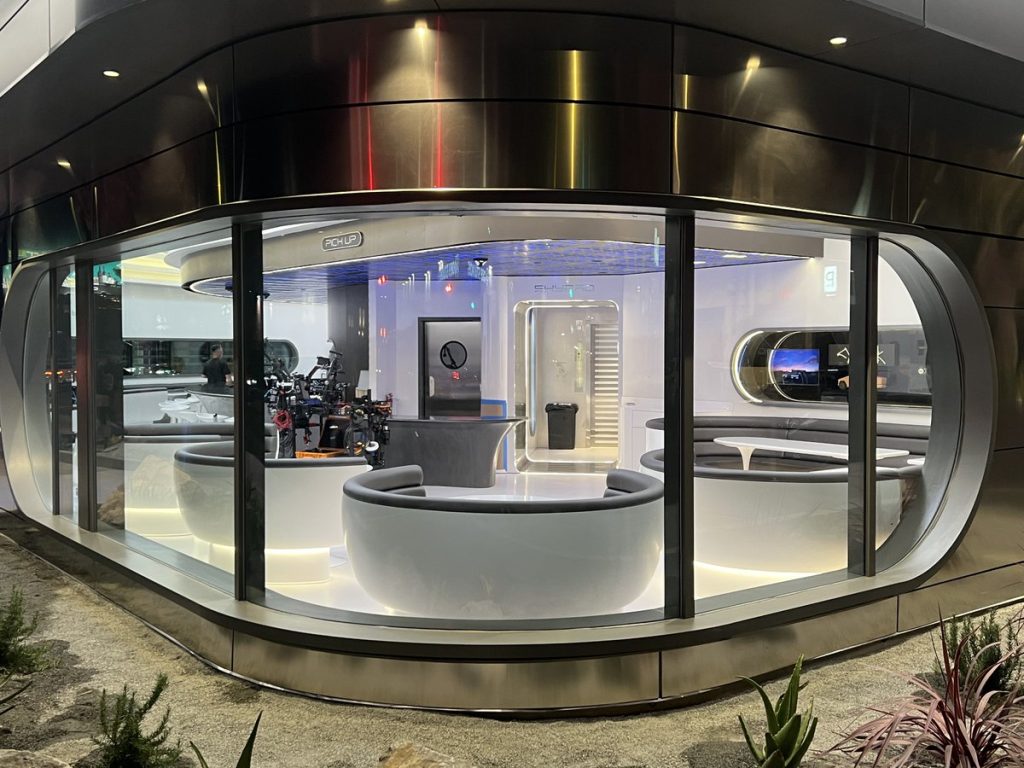
Credit: BradGoldbergMD | X
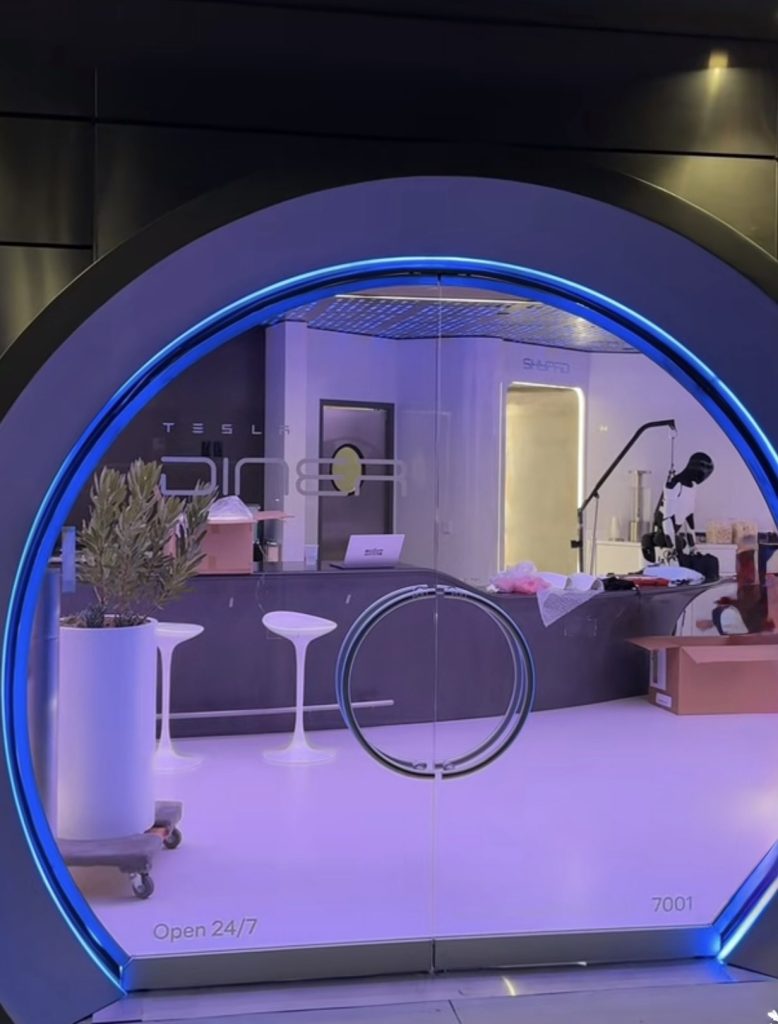
Credit: TeslaKing420 | X
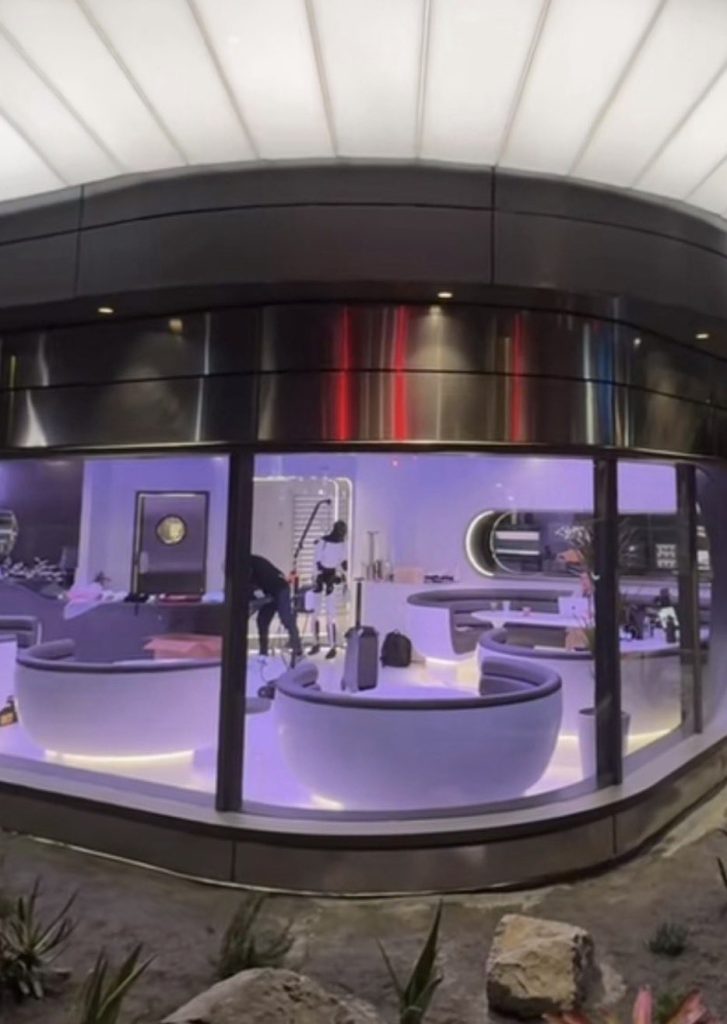
Credit: TeslaKing420 | X
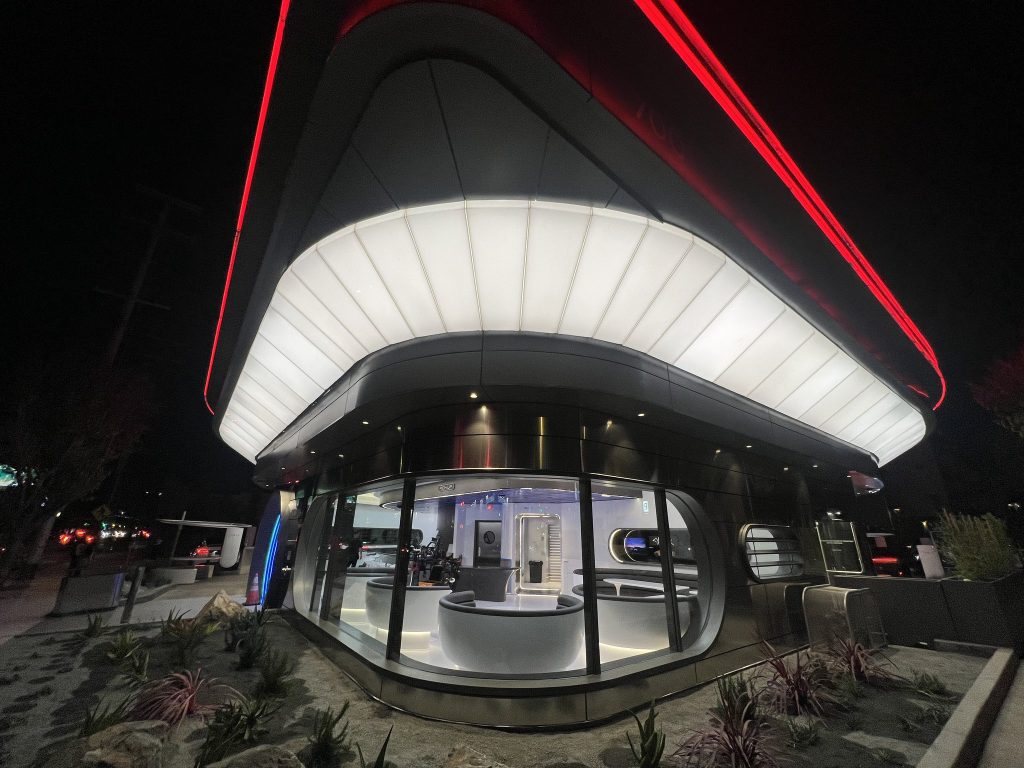
Credit: Brad Goldberg (via Sawyer Merritt on X)
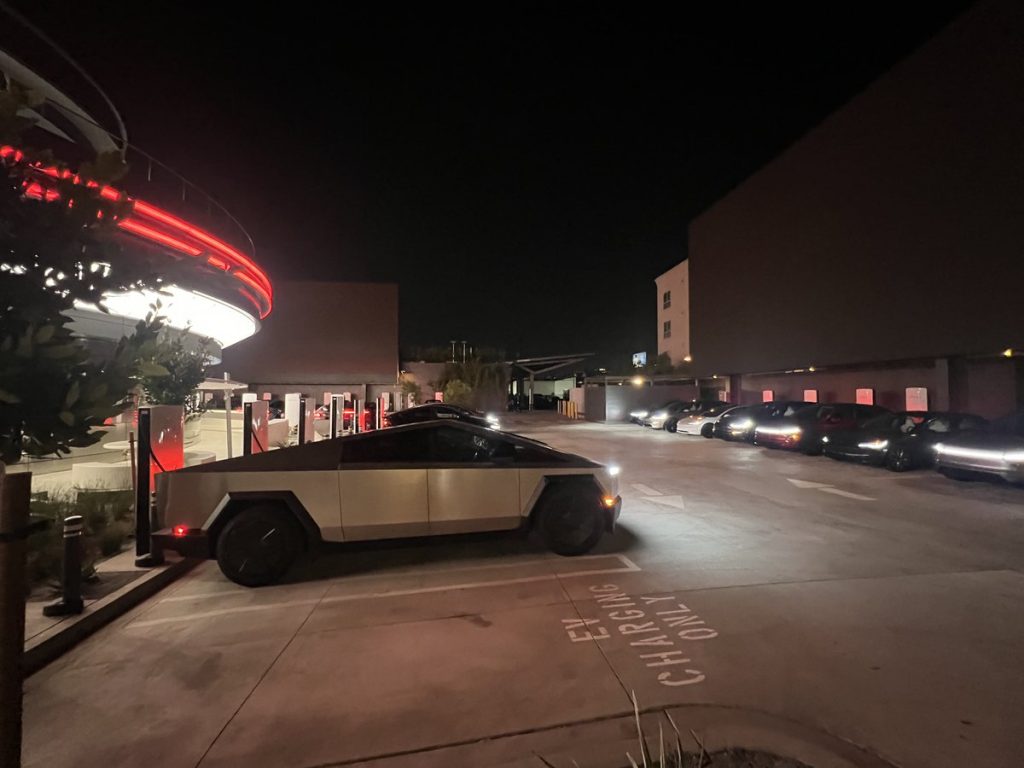
Credit: Brad Goldberg (via Sawyer Merritt on X)
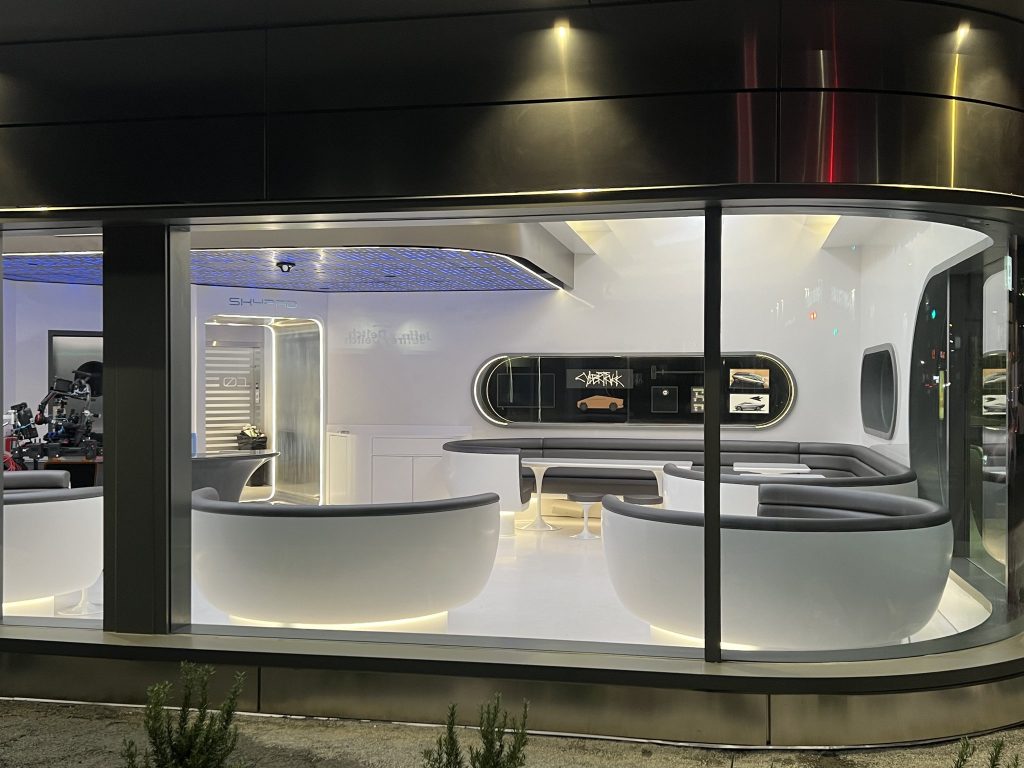
Credit: Brad Goldberg (via Sawyer Merritt on X)
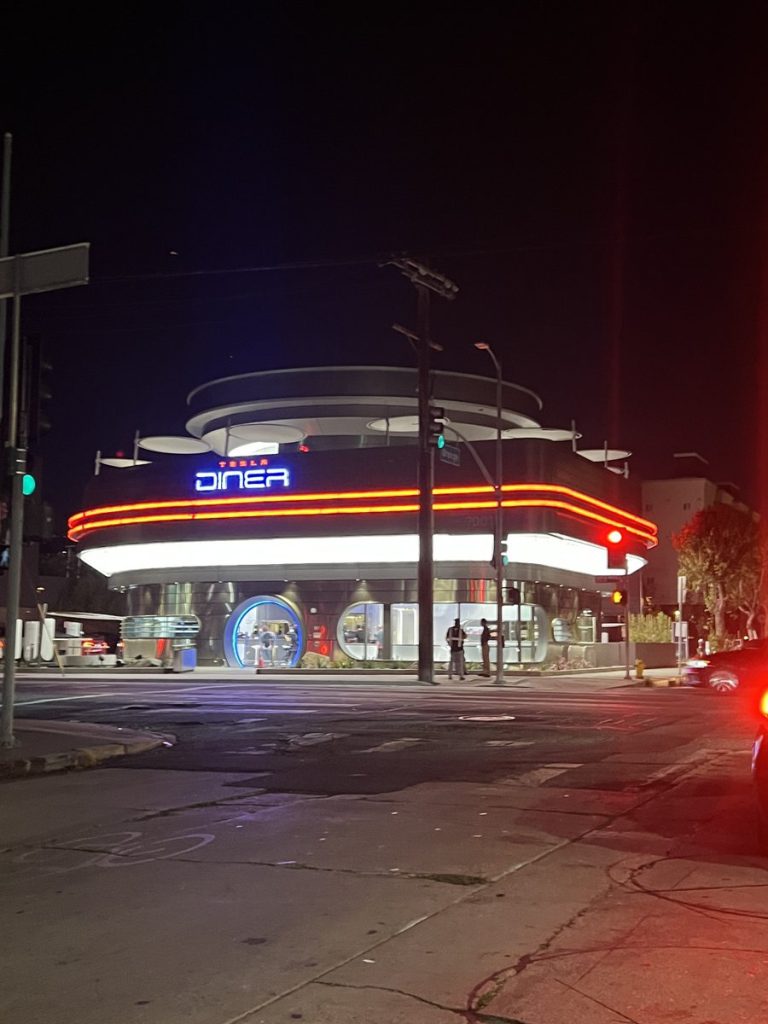
Credit: Brad Goldberg (via Sawyer Merritt on X)
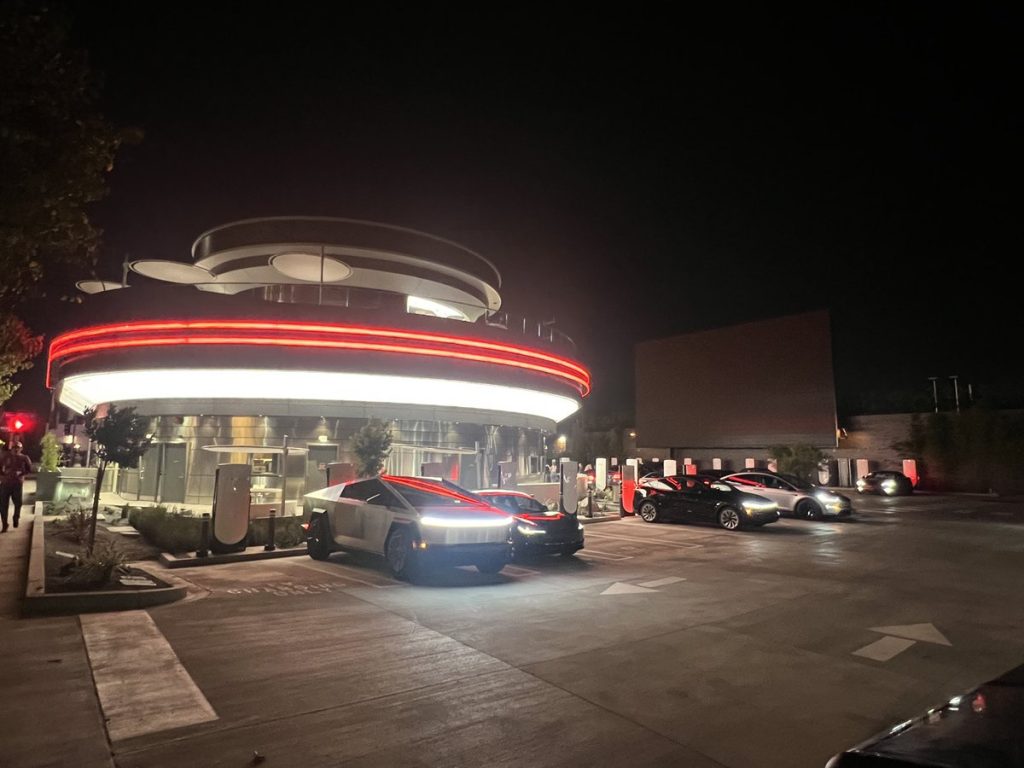
Credit: Brad Goldberg (via Sawyer Merritt on X)
READ MORE ON TESLA’S LA DINER: Tesla readies Drive-In Diner Supercharger for launch with app inclusion
When will the Tesla Diner open to external customers?
While it’s still not open to external customers yet, the news again suggests that the company could be close to an official opening date. Tesla first broke ground on the Diner in September 2023, after receiving a wave of building permit approvals throughout that year. Teslarati also covered much of the construction progress throughout last year, including when crews installed the first and second drive-in screens.
Located at 7001 West Santa Monica Boulevard, the idea was first discussed in 2018 by Musk and a few others on Twitter, featuring 1950s rock and roll, waiters on roller skates, and drive-in movie theater screens playing clips from some of history’s best movies. Notably, the photos of the front doors also show that the site will be open 24 hours a day, 7 days a week, whenever it does end up opening.
Tesla’s progress on Supercharger with diner, drive-in seen in aerial footage
-

 Elon Musk2 weeks ago
Elon Musk2 weeks agoTesla investors will be shocked by Jim Cramer’s latest assessment
-

 News2 days ago
News2 days agoTesla debuts hands-free Grok AI with update 2025.26: What you need to know
-

 Elon Musk4 days ago
Elon Musk4 days agoxAI launches Grok 4 with new $300/month SuperGrok Heavy subscription
-

 Elon Musk7 days ago
Elon Musk7 days agoElon Musk confirms Grok 4 launch on July 9 with livestream event
-

 News1 week ago
News1 week agoTesla Model 3 ranks as the safest new car in Europe for 2025, per Euro NCAP tests
-

 Elon Musk2 weeks ago
Elon Musk2 weeks agoxAI’s Memphis data center receives air permit despite community criticism
-

 News4 days ago
News4 days agoTesla begins Robotaxi certification push in Arizona: report
-

 News2 weeks ago
News2 weeks agoTesla sees explosive sales growth in UK, Spain, and Netherlands in June

















